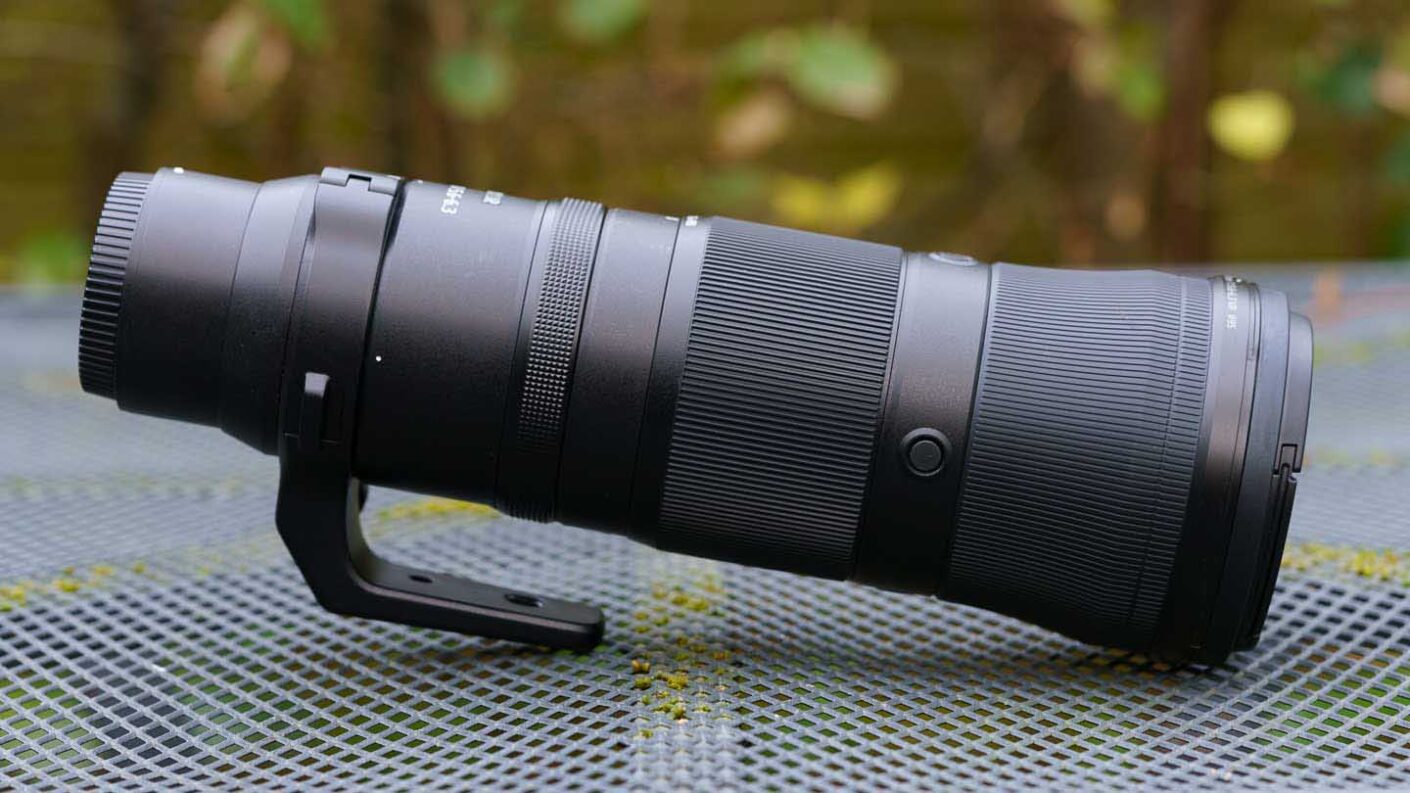You have certain expectations of a lens like the Nikon Nikkor Z 600mm f/4 TC VR S that commands such a high price, and its build quality doesn’t disappoint. It looks very smart, feels robust and it’s weather-sealed at every joint or moving point. I was able to test the weather-sealing during some heavy downpours of rain and the lens came through them unscathed.
While Nikon has made some weight-savings with the Z 600mm f/4 TC VR S, it’s still a hefty lens and weighs 3.26Kg (115 oz). It’s also 43.7cm (17.3-inches) long, so while it can be taken in the cabin rather than be stashed in the hold for a flight, it’s a big lens.
That weight is too heavy for me to hold steady for minutes at a time, which means the composition varies a little from shot to shot when I shoot a sequence handheld. The lens is stabilised and gives up to 5.5EV shutter speed compensation when paired with the Nikon Z9, Z7 II or Z6 II to benefit from the Synchro VR. With other cameras, there’s a claimed 5EV benefit. However, it’s most likely to be found in the hands of sports and wildlife photographers who will need to use fast shutter speeds to freeze subject movement.
According to Nikon, the centre of gravity of the Z 600mm f/4 TC VR S is in the middle of the tripod foot to help with balance. That certainly helped when using the lens on a tripod or monopod, it only took a minute or so to balance the lens and Nikon Z II on a gimbal on a tripod.
There are three rotatable rings on the Nikon Nikkor Z 600mm f/4 TC VR S. The first, which sits closest to the mount is the manual focus ring. This has a smooth action and can be used to adjust the focus manually if necessary when autofocus mode is selected.
Further forward from this, there’s a slim Control Ring that has square-textured covering that distinguishes it from the ridged rings. This can be set (via the menu) to adjust a setting such as the aperture, exposure compensation or ISO. I tend to use it for adjusting exposure compensation, but occasionally, I’ll switch to using it to set the aperture value.
A little further forward towards the front element, around the mid-point of the lens, there’s the Function (Fn) Ring that can be used to recall a stored focus point.
The wide front section of the lens, which occupies around a third of its length, also has ridged, rubberised coating but this is for more assured handling and protection, it’s not a control ring.
There are also L-Fn and L-Fn2 buttons with functions that can be customised via the camera menus. There are actually four L-Fn2 buttons distributed 90° apart around the lens barrel to ensure there’s always one in convenient reach.
These buttons are joined by a focus-limiter switch and an AF/M focus switch. The autofocus system can be set to operate across its full range (down to 4.3m) or from between 10m and infinity, which could be useful when shooting through a crowd or foliage.
Using a teleconverter with a lens normally involves removing the lens from the camera, attaching the teleconverter and then mounting the whole assembly on the camera. With the Z 600mm f/4 TC VR S, the built-in 1.4x teleconverter can be moved in and out of position with the flick of a switch. It makes switching between 600mm and 840mm very quick and easy. The movement is signalled by a soft ‘clunk’ sensation when the teleconverter lands in its new position.
This switch is accompanied by a lock switch, which is useful because there were a few occasions when I moved the teleconverter in or out of position accidentally.
A button just below the teleconverter switch enables the focus position to be saved for recall using the Fn ring mentioned earlier. On all cameras apart from the Nikon Z30, once the focus point has been stored, rotating the Fn ring moves the focus to the stored point and, as long as the ring is held, the focus won’t move when the shutter button is pressed.
Nikon has also built in a security slot to accept a Kensington anti-theft cable, which seems like a sensible move for a lens at this price. There are also two strap lugs for attaching the supplied strap and carrying the lens between shots. This reduces the risk of damaging the camera’s lens mount by using a camera strap.



